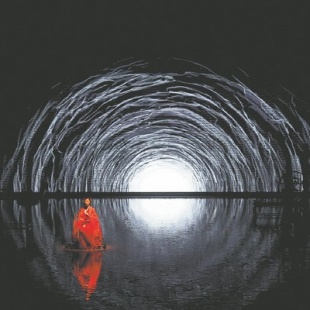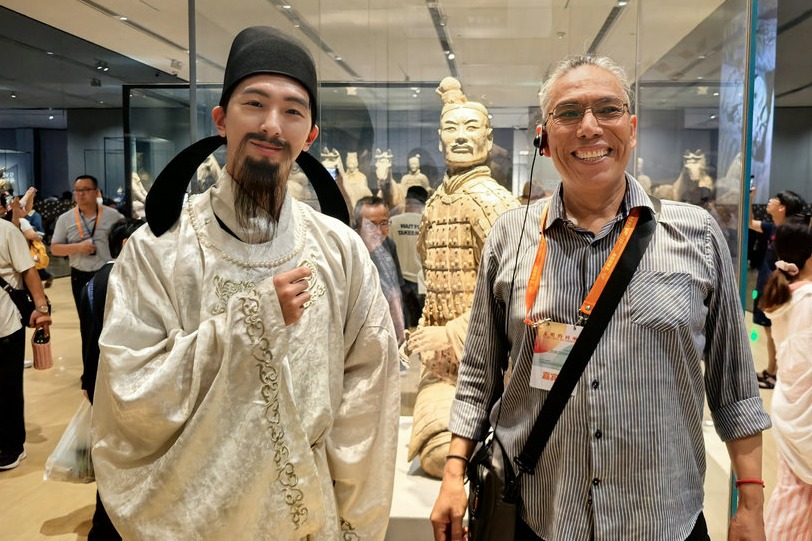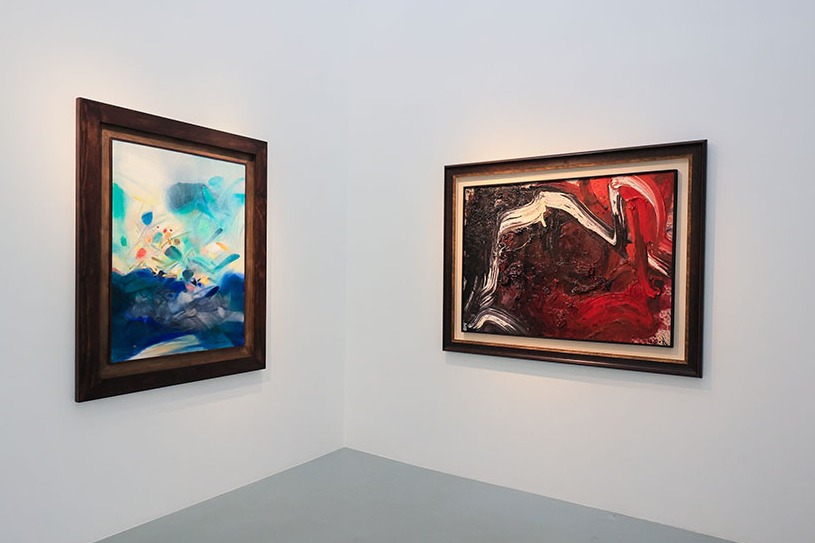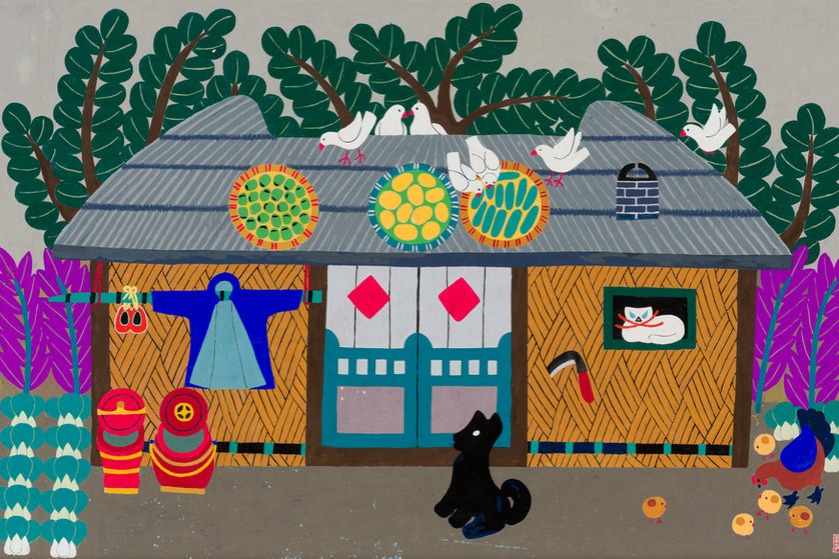A dream destination
Unique arts complex brings a Chinese classic to life, Tu Jiayi reports.

You've heard the phrase: "getting lost in a good book". Well, thanks to ingenious architecture, bold artistic devices and carefully-designed theaters, Unique Dream of Red Mansion in Langfang, Hebei province, enables fans of the eponymous Chinese classic to do — literally — just that.
The novel written by Cao Xueqin, A Dream of Red Mansions, is an epic work that holds a mirror up to Chinese society during the Qing Dynasty (1644-1911), set against the backdrop of the rise and fall in the fortunes of four influential families. Told from the perspective of a tragic, but wealthy young man, Jia Baoyu, it depicts life through a mixture of reality and dreams.
Inspired by the novel's philosophy, Wang Chaoge, as general planner, director, and playwright, built Unique Dream of Red Mansion to be a fusion of literature, architecture, technology and memory. She believes there are no words to describe what she has created, adding that even "dreamland" doesn't cover its scope.
The ambitious project, funded by ENN Group, officially opened on July 23, 2023, and is now celebrating its second anniversary. The arts complex is located approximately 40 kilometers southeast of Beijing and is adjacent to the Beijing Daxing International Airport Economic Zone, allowing Wang ample space to make her sprawling vision a reality.
"I want to bewilder visitors, and to keep everyone guessing what this place really is. I want to make you feel as if you've never seen anything like it," Wang explains.
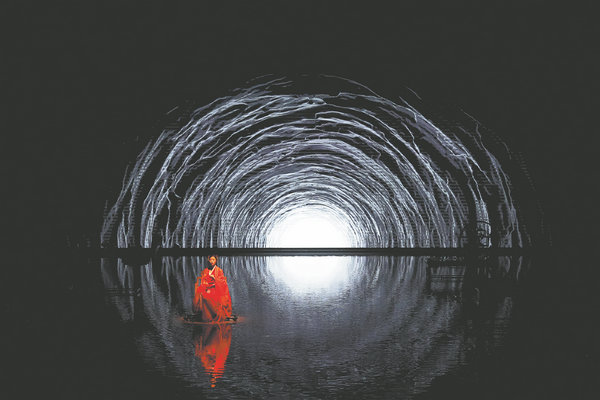
"I aim to shatter your preconceptions. For here, a new genre is born, one that, unless you witness it, defies all imagination; a place beyond mental sketching. Before its conception, no one ever merged theaters into a drama settlement cluster on such a scale."
The Unique Dream of Red Mansion is a labyrinth of 108 spaces and 21 immersive performances, where audiences drift between reality and illusion, past and present.
According to the latest figures, the complex has been in continuous operation for 730 days, attracting over 2 million visitors and staging more than 21,000 immersive performances. During this year's summer vacation, visitor traffic sees an increase of about 60 percent.
The scenes and elements are inspired by the novel, with each location given a poetic name from the book, touching the audience's senses through the shifting currents of an epic that has haunted Chinese hearts for centuries.
Wang spent nearly eight years bringing this project to life. As a keen lover of the novel, Wang believes it's not merely a book to be staged, but an infinite canvas. "Everyone has his own interpretation of A Dream of Red Mansions," Wang adds.
"It is the dream you read, but never finish."
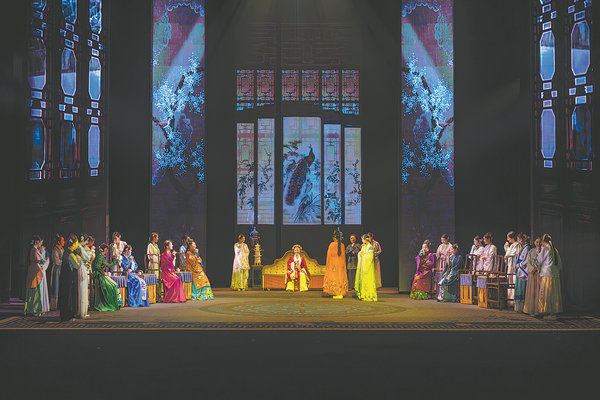
The performances within the complex unfold along two intertwined threads: one reimagines the most iconic and climactic moments from the novel itself; the other explores the stories that have emerged throughout the years between readers and the novel. The entire work is divided among three grand theaters and multiple micro-theaters spread over an area of around 150,000 square meters. With 72,000 sq m of constructed performance space, the Unique Dream of Red Mansion feels less like a theater, and more like a living organism. Designed as a maze of "moving views and shifting scenes", it borrows from the aesthetics of Chinese ink painting — suggestion over detail, ambiguity over closure; a constant dance between presence and absence. Visitors wander through intricately crafted gardens, step into chambers alive with projection and sound, or slip into dim alleys, guided by a narrator's whispered voice.
"And, I especially hope that, after you leave, a part of you will linger here, immersed for a long, long time. Because throughout the whole place, what we provide is experience," Wang adds, "This experience is my sole top priority. It's not just about plot or story."
Inside, the unexpected is the norm. There is a Gate Theater, a hall lined with doors from different eras and regions in China, each a potential portal to an untold story. There is also a Bed Theater, where audiences lie down to watch performances. "Why can't you watch a play lying down? Or leaning forward? Or acting yourself? Who set these rules?" Wang says.
"You can't impose boundaries on me, and can't set thresholds for me in art design … I consider myself more of a forward-thinking individual. This isn't about my personal recollections, but about resonating with the pulse of our times."
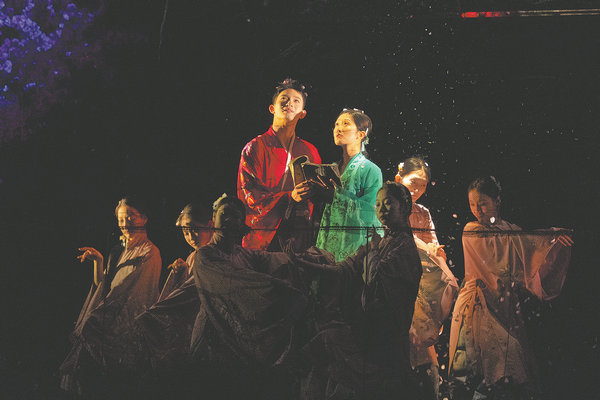
Wang makes it clear that her intention was never to reconstruct the Daguan Garden from the novel, nor to create replicas of the main characters' homes. "You shouldn't anticipate replicating a storyline from A Dream of Red Mansions. Rather, you should come to collect yourself, encounter yourself, and bear witness to yourself, until finally, you can fall in love with yourself — perhaps even learn to help yourself," says Wang.
Wang explains that the novel has played an important role in her life and that she has "cried for it" since her teenage years, when she would read it in secret and copy down the poems and couplets that struck her.
When she finally finished, she recalls, "it felt like a world had left me, and I cried. For a week afterward, I was like a soul not fully here". Returning to it later in life, she was able to see the questions beneath the characters and plot.
"Where life comes from? Where death leads? Are the book's Daguan Garden and realm between worlds real? Or is it an illusion? These are the questions that bothered me," says Wang.
For many visitors, the main appeal of the venue's design is its balance between visual richness and deliberate emptiness. Visitors may encounter a plain white wall, or a room left seemingly bare — but never by accident.
"In Chinese aesthetics, leaving blank space is not about creating absence — it's about creating larger space for imagination," Wang says, "What you do not see can be greater than what you see. If you fill everything in, it becomes dull."

This technique, known as liubai, or leaving blank, echoes the untouched space in a scroll painting, the pause in a poem, or the silence between musical notes. It invites the audience to step in — to imagine the unseen, and in doing so, make it their own.
"We have our own ways of seeing, our own ways of telling," says Wang, "If you leave here and, even for a moment, feel that something inside you has been touched — then I am satisfied. Because the story is not mine. It's yours."



Contact the writer at tujiayi@chinadaily.com.cn


